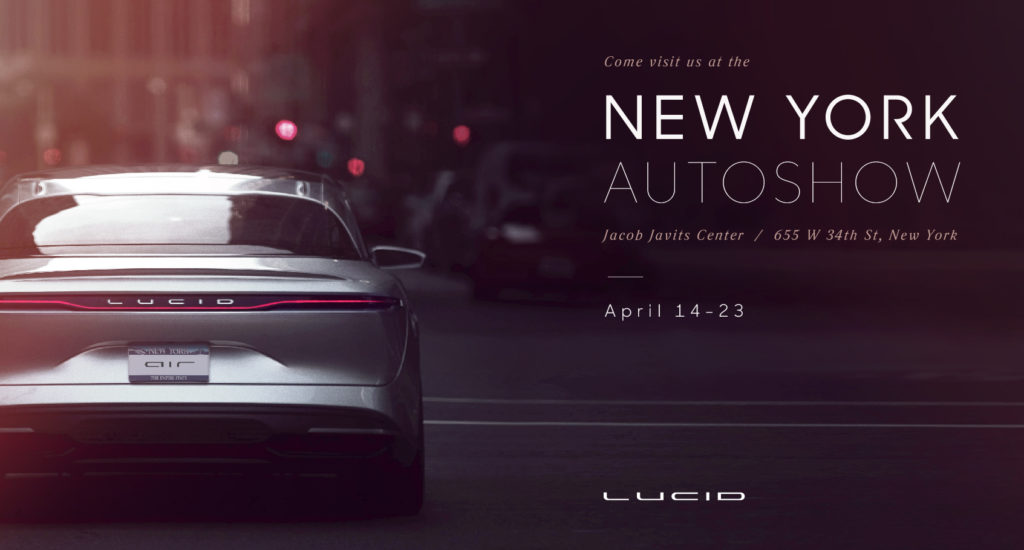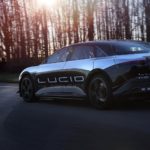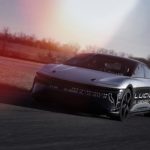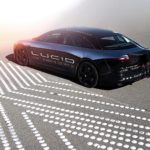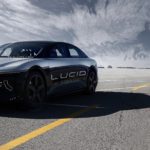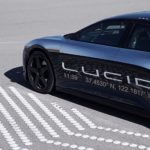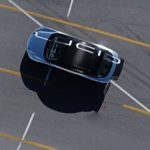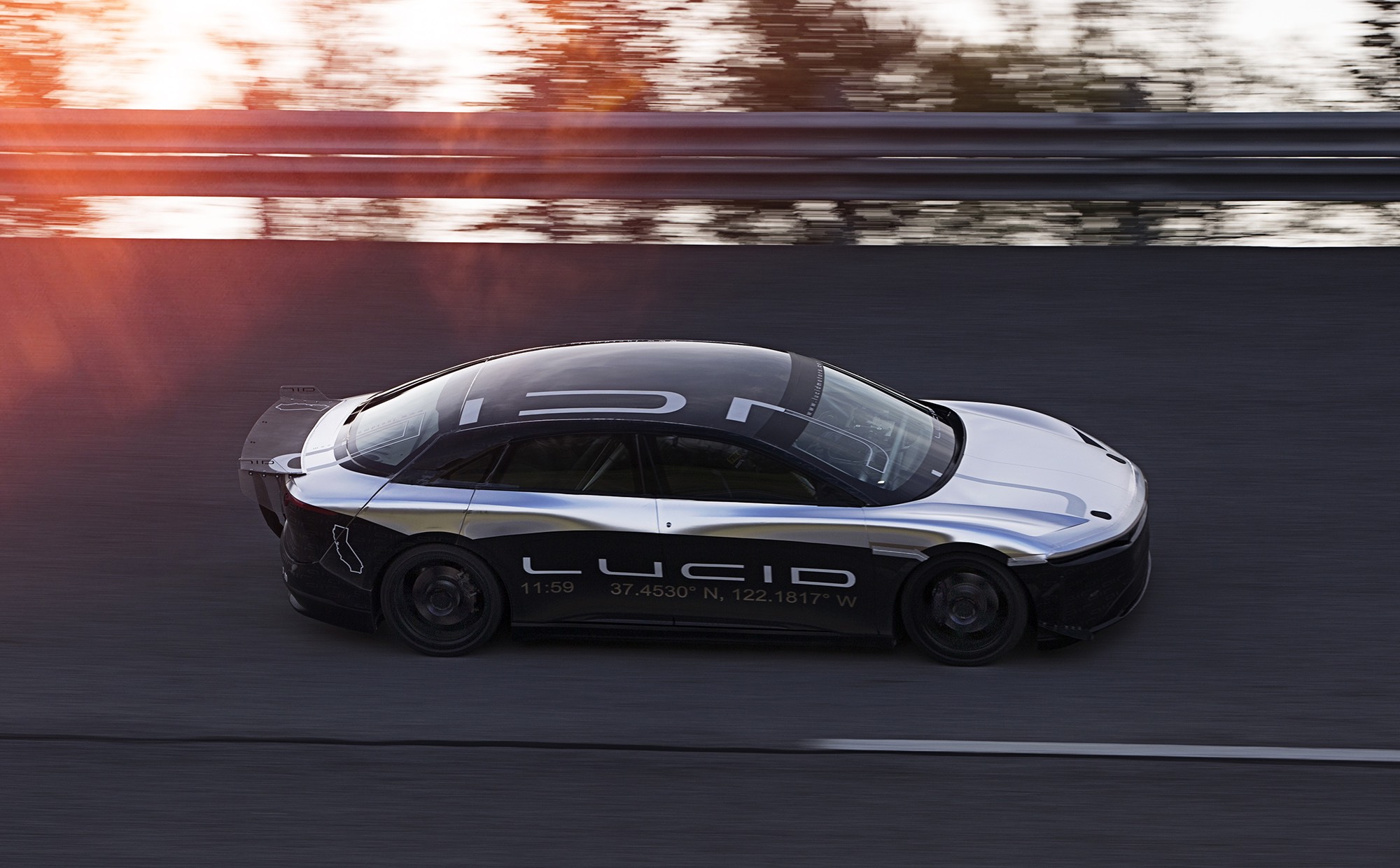
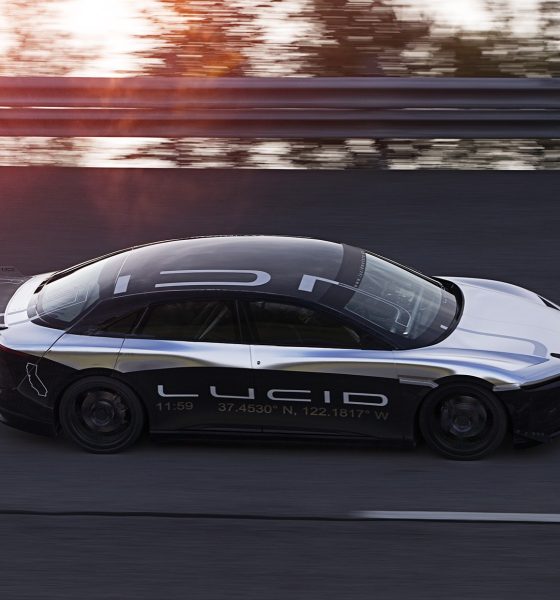
News
All-electric Lucid Motors ‘Air’ reaches 217 mph in high speed stability test
Making a grand entrance at the 117th-annual New York International Auto Show today is electric car startup Lucid Motors. The California-based maker of the “private jet on wheels” is debuting its ultra luxury Lucid ‘Air’ along with its Alpha Speed Car, which recently completed its first high-speed stability test at a software limited 217 mph (350km/h).
The fully autonomous capable Lucid Air represents a new take on luxury vehicles, packing in amenities often found in private jets and boasts expansive space with an exterior footprint of a mid-sized car. On paper, the Air may seem like a direct competitor with current Silicon Valley sweetheart, Tesla’s Model S. However, one can argue that the Lucid Air – with its Maybach quality interior and unprecedented performance – is better equipped to stand in a class of its own. The Air will ship with autonomous ready hardware, and when paired with the distinct focus on passenger comfort and luxury, the all electric powertrain that’s capable of 400 miles of range and 1,000 horsepower starts feeling like a different kind of experience altogether. Impressively, the luxury of the Air will start at just $52,500 after federal tax credits, which is a sizable savings from the costlier Tesla Model S.
ALSO SEE: Tesla Model S vs. Lucid Air: comparison of range, performance and price
Lucid Motors is raising capital to build out the first phase of manufacturing from its upcoming plant in Casa Grande, Arizona. The $700 million factory is expected to begin production on the Lucid Air in 2019 and produce 10,000 vehicles within the first 12 months. Lucid Motors revealed through today’s press release that the factory will reach full capacity in 2022 and produce 130,000 vehicles annually.
The company also announced through the press release that it has begun high speed testing of an Alpha prototype of the Air.
“In preparation for production, Lucid Air Alpha prototypes are undergoing a rigorous development program. Lucid has designated one of these test prototypes as a high-performance test vehicle and has installed a roll-cage for safety purposes. The Alpha Speed Car will be used for evaluating at-the-limit performance.”
Lucid completed the high speed stability on a 7.5 mile oval race track at the independent automotive testing ground TRC Ohio. The vehicle was able to successfully complete the stability and high speed testing at a staggering 217mph (350km/h).
Here are some amazing photos captured during the high speed run.
Unlike Tesla which produces lithium ion battery cells with partner Panasonic, Lucid has locked in an exclusive battery deal with Samsung SDI and will utilize “next-generation cylindrical cells that are able to exceed current performance benchmarks in areas such as energy density, power, calendar life and safety”, according to an announcement made by the company.
Results from Lucid’s 217 mph high speed testing would indicate that the company may have developed a sophisticated battery thermal management system that allows the battery pack to supply maximum output to the vehicle’s high efficiency motor. Lucid Motors Chief Technology Officer Peter Rawlinson has taken his years of experience, previously working at Tesla where he served as Chief Engineer, and rolled that into a battery management system that overcomes thermal limitations faced by Tesla’s system. The Electric GT all-Model S race team experienced some overheating issues after spending time on the racetrack with their Model S:
“The problem is the car has thermal limitations. You can have a very fast car on a qualifying lap, then it goes back to nominal power for 15 or 16 laps…If you save the temperature you can peak it again. The challenge will be to drive as quickly as possible without overheating the motor.”
Only time will tell if Lucid Motors can deliver on its grand vision of the future. If the test drive we took in Los Angeles is any indicator of what’s to come, Lucid Motors is on track to live up to its promises, tenfold.
Lucid Air Makes International Auto Show Debut in New York
Luxury electric sedan completes first high speed stability test at 217 mph
New York, NY, April 13, 2017 – Lucid Motors made its global auto show debut today at the 117th-annual New York International Auto Show. The company showed the Lucid Air luxury electric sedan and also presented its Alpha Speed Car test vehicle, which had just completed its first high-speed stability test at 217 mph.
Lucid Air: Leading the Charge in Luxury Mobility
The Lucid Air was first unveiled in December 2016. The all-electric sedan combines forward- looking design with groundbreaking technology to establish an entirely new class of vehicle. Featuring full-size interior space in a mid-size exterior footprint, the autonomous-ready Air will be available with up to 400 miles of range and 1,000 horsepower.
The Air will be manufactured in Casa Grande, Arizona. The factory, first announced in November 2016, will come online in 2019 and build 10,000 vehicles in the first 12 months. By 2022 the factory is expected to employ 2,000 full-time employees and manufacture up to 130,000 vehicles annually.
The Lucid Air is priced from $52,500 after federal tax credits. The base Lucid Air will feature a 400-horsepower motor, rear-wheel drive, and a 240-mile range. Deliveries will begin in 2019. Customers can pre-order the Air at https://lucidmotors.com/car/reserve.
High Speed Testing: Evaluating Stability and Durability at 217 mph
In preparation for production, Lucid Air Alpha prototypes are undergoing a rigorous development program. Lucid has designated one of these test prototypes as a high-performance test vehicle and has installed a roll-cage for safety purposes. The Alpha Speed Car will be used for evaluating at-the-limit performance.
For the Alpha Speed Car’s first testing session, Lucid headed to TRC Ohio to use their 7.5-mile oval to evaluate high-speed behaviors, including vehicle stability and powertrain thermal management. The test, software-limited to 217mph (350km/h), was successful in demonstrating the capabilities of the car and in finding areas for improvement that could not be properly evaluated in static bench tests.
Real-world tests are an important part of the engineering process, allowing the team to correlate computer simulation models with real-world performance. The collected data will now be used to finesse thermal and aero computer simulations and to make further performance improvements that will be tested later this year at higher speeds.
A video of the test can be seen at https://youtu.be/7k03MH7ztUs.

News
Tesla Full Self-Driving shows confident navigation in heavy snow
So far, from what we’ve seen, snow has not been a huge issue for the most recent Full Self-Driving release. It seems to be acting confidently and handling even snow-covered roads with relative ease.
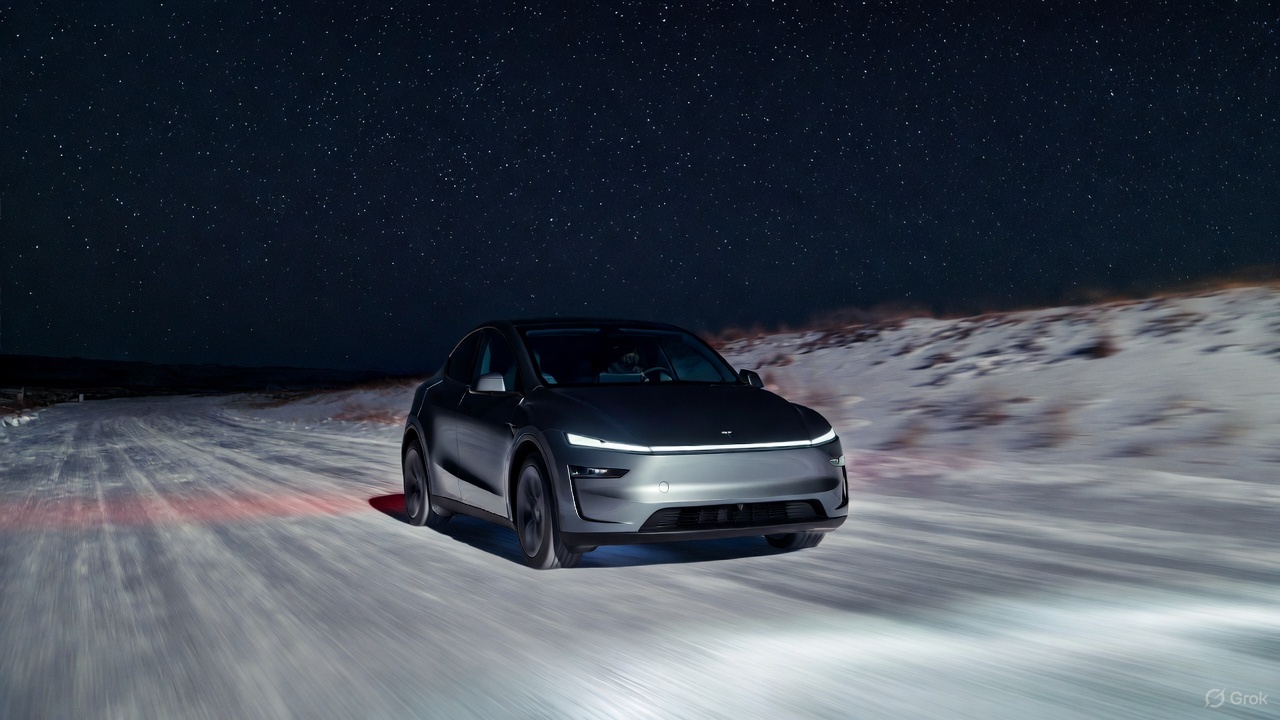
Tesla Full Self-Driving is getting its first taste of Winter weather for late 2025, as snow is starting to fall all across the United States.
The suite has been vastly improved after Tesla released v14 to many owners with capable hardware, and driving performance, along with overall behavior, has really been something to admire. This is by far the best version of FSD Tesla has ever released, and although there are a handful of regressions with each subsequent release, they are usually cleared up within a week or two.
Tesla is releasing a modified version of FSD v14 for Hardware 3 owners: here’s when
However, adverse weather conditions are something that Tesla will have to confront, as heavy rain, snow, and other interesting situations are bound to occur. In order for the vehicles to be fully autonomous, they will have to go through these scenarios safely and accurately.
One big issue I’ve had, especially in heavy rain, is that the camera vision might be obstructed, which will display messages that certain features’ performance might be degraded.
So far, from what we’ve seen, snow has not been a huge issue for the most recent Full Self-Driving release. It seems to be acting confidently and handling even snow-covered roads with relative ease:
FSD 14.1.4 snow storm Ontario Canada pic.twitter.com/jwK1dLYT0w
— Everything AI (@mrteslaspace) November 17, 2025
I found the steepest, unplowed hill in my area and tested the following:
• FSD 14.2.1 on summer tires
• FSD 14.2.1 on winter tires
• Manual drivingBut I think the most impressive part was how FSD went DOWN the hill. FSD in the snow is sublime $TSLA pic.twitter.com/YMcN7Br3PU
— Dillon Loomis (@DillonLoomis) December 2, 2025
Well.. I couldn’t let the boys have all the fun!
Threw the GoPro up and decided to FSD v14.2.1 in the snow. Roads were not compacted like the other day, a little slippery, but overall doable at lower speeds. Enjoy the video and holiday music 🎶
Liked:
Took turns super slow… pic.twitter.com/rIAIeh3Zu3— 🦋Diana🦋 (@99_Colorado) December 3, 2025
Moving into the winter months, it will be very interesting to see how FSD handles even more concerning conditions, especially with black ice, freezing rain and snow mix, and other things that happen during colder conditions.
We are excited to test it ourselves, but I am waiting for heavy snowfall to make it to Pennsylvania so I can truly push it to the limit.
News
Tesla hosts Rome Mayor for first Italian FSD Supervised road demo
The event marked the first time an Italian mayor tested the advanced driver-assistance system in person in Rome’s urban streets.
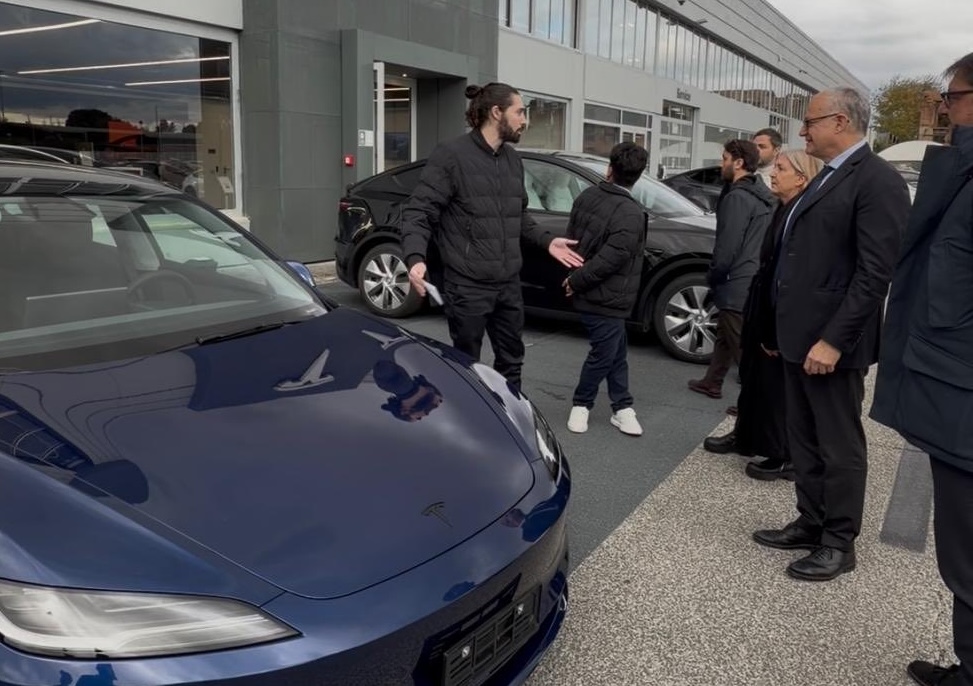
Tesla definitely seems to be actively engaging European officials on FSD’s capabilities, with the company hosting Rome Mayor Roberto Gualtieri and Mobility Assessor Eugenio Patanè for a hands-on road demonstration.
The event marked the first time an Italian mayor tested the advanced driver-assistance system in person in Rome’s urban streets. This comes amid Tesla’s push for FSD’s EU regulatory approvals in the coming year.
Rome officials experience FSD Supervised
Tesla conducted the demo using a Model 3 equipped with Full Self-Driving (Supervised), tackling typical Roman traffic including complex intersections, roundabouts, pedestrian crossings and mixed users like cars, bikes and scooters.
The system showcased AI-based assisted driving, prioritizing safety while maintaining flow. FSD also handled overtakes and lane decisions, though with constant driver supervision.
Investor Andrea Stroppa detailed the event on X, noting the system’s potential to reduce severe collision risks by up to seven times compared to traditional driving, based on Tesla’s data from billions of global fleet miles. The session highlighted FSD’s role as an assistance tool in its Supervised form, not a replacement, with the driver fully responsible at all times.
Path to European rollout
Tesla has logged over 1 million kilometers of testing across 17 European countries, including Italy, to refine FSD for local conditions. The fact that Rome officials personally tested FSD Supervised bodes well for the program’s approval, as it suggests that key individuals are closely watching Tesla’s efforts and innovations.
Assessor Patanè also highlighted the administration’s interest in technologies that boost road safety and urban travel quality, viewing them as aids for both private and public transport while respecting rules.
Replies on X urged involving Italy’s Transport Ministry to speed approvals, with one user noting, “Great idea to involve the mayor! It would be necessary to involve components of the Ministry of Transport and the government as soon as possible: it’s they who can accelerate the approval of FSD in Italy.”
News
Tesla FSD (Supervised) blows away French journalist after test ride
Cadot described FSD as “mind-blowing,” both for the safety of the vehicle’s driving and the “humanity” of its driving behaviors.
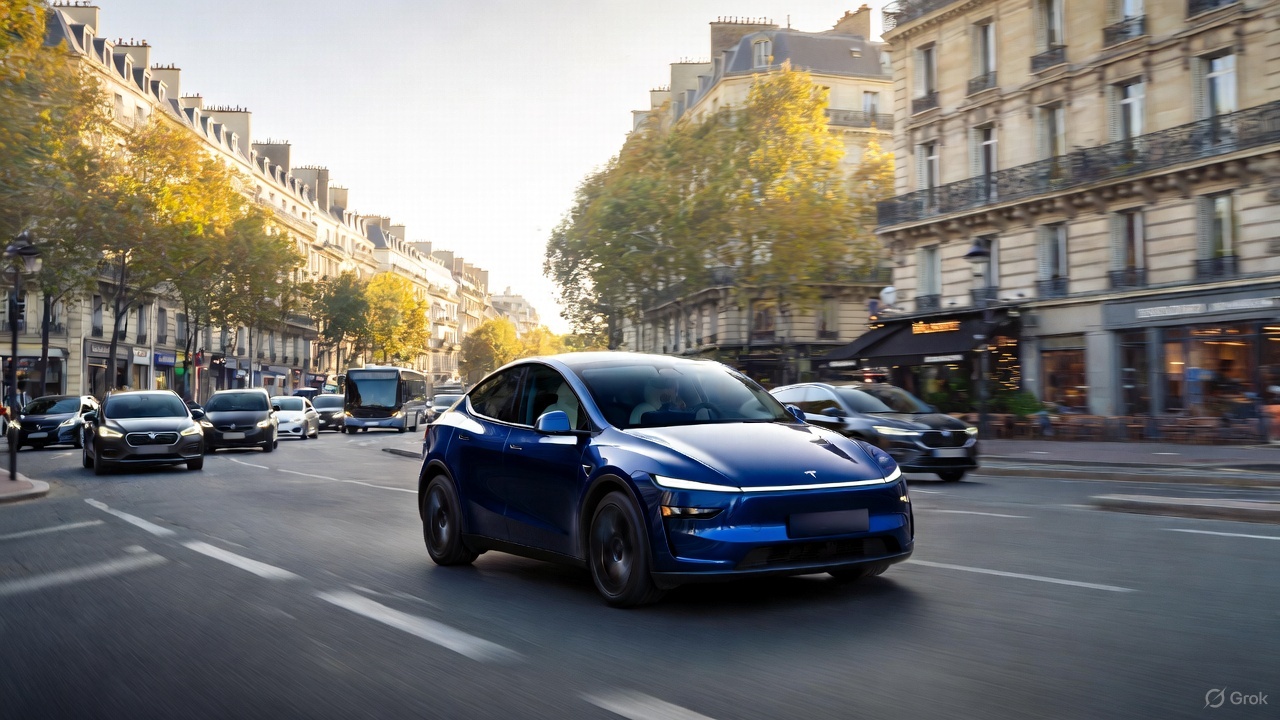
Tesla’s Full Self-Driving (Supervised) seems to be making waves in Europe, with French tech journalist Julien Cadot recently sharing a positive first-hand experience from a supervised test drive in France.
Cadot, who tested the system for Numerama after eight years of anticipation since early Autopilot trials, described FSD as “mind-blowing,” both for the safety of the vehicle’s driving and the “humanity” of its driving behaviors.
Julien Cadot’s FSD test in France
Cadot announced his upcoming test on X, writing in French: “I’m going to test Tesla’s FSD for Numerama in France. 8 years I’ve been waiting to relive the sensations of our very first contact with the unbridled Autopilot of the 2016s.” He followed up shortly after with an initial reaction, writing: “I don’t want to spoil too much because as media we were allowed to film everything and I have a huge video coming… But: it’s mind-blowing! Both for safety and for the ‘humanity’ of the choices.”
His later posts detailed FSD’s specific maneuvers that he found particularly compelling. These include the vehicle safely overtaking a delivery truck by inches, something Cadot said he personally would avoid to protect his rims, but FSD handled flawlessly. He also praised FSD’s cyclist overtakes, as the system always maintained the required 1.5-meter distance by encroaching on the opposite lane when clear. Ultimately, Cadot noted FSD’s decision-making prioritized safety and advancement, which is pretty remarkable.
FSD’s ‘human’ edge over Autopilot
When asked if FSD felt light-years ahead of standard Autopilot, Cadot replied: “It’s incomparable, it’s not the same language.” He elaborated on scenarios like bypassing a parked delivery truck across a solid white line, where FSD assessed safety and proceeded just as a human driver might, rather than halting indefinitely. This “humanity” impressed Cadot the most, as it allowed FSD to fluidly navigate real-world chaos like urban Paris traffic.
Tesla is currently hard at work pushing for the rollout of FSD to several European countries. Recent reports have revealed that Tesla has received approval to operate 19 FSD test vehicles on Spain’s roads, though this number could increase as the program develops. As per the Dirección General de Tráfico (DGT), Tesla would be able to operate its FSD fleet on any national route across Spain. Recent job openings also hint at Tesla starting FSD tests in Austria. Apart from this, the company is also holding FSD demonstrations in Germany, France, and Italy.
